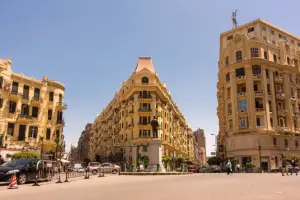
Al-Qata’i
introduction
Al-Qata’i, a historical village located in the Minya Governorate of Upper Egypt, has been a significant part of Egypt’s cultural and agricultural landscape for centuries. The village is situated on the west bank of the Nile River, approximately 230 kilometers south of Cairo. With a rich history dating back to the Pharaonic era, Al-Qata’i has played a crucial role in shaping Egypt’s heritage and identity. In this article, we will delve into the history, culture, and significance of Al-Qata’i in Egypt, spanning around 600 words.
The name Al-Qata’i is believed to have originated from the Arabic word “Qata’a,” which means “a group of palm trees.” This moniker reflects the village’s abundant palm groves and agricultural wealth, which have been central to its economy since ancient times. Archaeological evidence suggests that the area around Al-Qata’i was inhabited as early as the Predynastic period (circa 4000 BCE), with the village’s strategic location on the Nile River contributing to its growth and prosperity.
Throughout the Pharaonic era, Al-Qata’i was a vital center for agriculture, particularly in the cultivation of palm trees. The village’s fertile soil and favorable climate allowed for the cultivation of various crops, including dates, grapes, and olives. The inhabitants of Al-Qata’i were skilled farmers who developed innovative irrigation systems to harness the Nile’s waters, ensuring the sustainability of their agricultural practices.
The arrival of Islam in the 7th century CE brought significant changes to the village, as it became part of the Islamic Caliphate. Al-Qata’i’s residents embraced the new faith, constructing mosques and religious schools to promote Islamic teachings and culture. One of the most notable landmarks in Al-Qata’i is the Mosque of Sultan Qalawun, built in the 13th century CE, which stands as a testament to the village’s religious and architectural heritage.
During the Ottoman period (1517-1798), Al-Qata’i experienced a period of economic prosperity and cultural flourishing. The village became a center for crafts and handicrafts, with skilled artisans producing intricate pottery, woven textiles, and other artifacts. The village’s location on the trade routes connecting Upper Egypt to the Mediterranean Sea further boosted its economic importance, making it a bustling marketplace for goods and services.
In the 19th and early 20th centuries, Al-Qata’i witnessed significant changes under the rule of Muhammad Ali Pasha, who modernized Egypt’s agriculture and infrastructure. The introduction of cash crops, such as cotton and sugarcane, transformed the village’s economy, while the construction of railways and roads facilitated trade and communication.
Despite these changes, Al-Qata’i managed to preserve its cultural identity and traditional way of life. The village’s inhabitants continued to practice their age-old agricultural techniques, passing down their knowledge from generation to generation. This strong sense of community and attachment to the land has been a defining characteristic of Al-Qata’i’s residents, fostering a deep respect for the environment and a commitment to sustainable practices.
Today, Al-Qata’i remains an essential part of Egypt’s cultural landscape, attracting tourists and researchers interested in the country’s rich history and heritage. The village’s picturesque palm groves, ancient mosques, and traditional houses offer a glimpse into Egypt’s past, while its vibrant local festivals and events celebrate the region’s unique cultural identity.
In conclusion,
Al-Qata’i in Egypt is a village steeped in history, culture, and tradition. Its agricultural wealth, architectural landmarks, and strong sense of community have contributed to its significance throughout the ages. As a living testament to Egypt’s past, Al-Qata’i continues to inspire and captivate visitors, reminding us of the importance of preserving our cultural heritage for future generations.